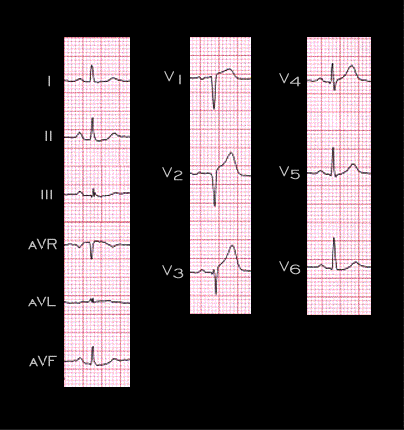
This ECG was recorded one hour after the onset of severe, crushing left anterior chest pain in a 74 year old woman. Note the elevation of the ST segment in leads V1-V3. It measures 1 mm in V1 and 2 mm in leads V2 and V3. The T wave in these leads is quite tall. These changes suggest acute transmural ischemia of the left ventricular anterior wall and are consistent with an acute coronary event caused by an occlusion of the left anterior descending coronary artery.
